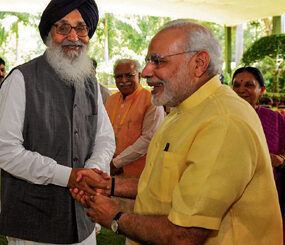

The ethnic violence that engulfed Manipur in May 2023, pitting the Meitei and Kuki-Zomi communities against each other, has exposed profound systemic failures. Beyond the immediate tragedy, the crisis raises urgent questions about governance, justice, and national unity. The ethnic violence that erupted between the Meitei and Kuki communities, is indeed a stain on the nation’s conscience. Here’s why:
Humanitarian Catastrophe
The toll of the conflict is staggering:
- 260 fatalities, 1,500 injured, and over 70,000 displaced.
- Widespread reports of sexual violence, arson, and targeted killings, including the harrowing video of two Kuki women paraded naked—a moment that sparked national outrage.
- Destruction of 250+ religious sites and entire villages, displacing families into overcrowded, under-resourced relief camps.
Despite these horrors, the state and central responses were marked by delays, indifference, and failure to protect vulnerable communities.
Collapse of Governance
The violence revealed a near-total breakdown of constitutional machinery:
- Law enforcement bias: Allegations of police inaction or complicity deepened distrust, particularly among Kuki communities.
- Segregation: The state fractured into ethnically divided zones—Meitei-dominated valleys and Kuki-Zomi hills—with parallel administrations emerging.
- Judicial condemnation: The Supreme Court labeled the violence a “constitutional failure,” mandating a Special Investigation Team (SIT) amid accusations of institutional apathy.
Leadership Vacuum
The crisis underscored alarming political failures:
- Delayed response: The Prime Minister broke his silence only after the viral video of women being paraded naked, shook the entire nation. drew national attention, framing his remarks reactively rather than proactively.
- Absenteeism: Despite the scale of the crisis, PM Modi has yet to visit Manipur, eroding public trust in the central government’s commitment to reconciliation. The Prime Minister’s absence has not gone unnoticed — it has been a source of anger and disappointment for many in the state and across the country. His lack of engagement is more than a political misstep; it is a moral failure that casts a shadow on the government’s commitment to national unity and equal treatment for all citizens.
- State government’s role: Chief Minister N. Biren Singh faced allegations of bias and mishandling, yet the BJP retained him, delaying accountability until Feb. 2025. The “double engine sarkar” (2 Engine Government; Central & State governed by same party BJP) slogan rang hollow as coordination between state and central governments faltered.
Roots of the Conflict
- Historical Tensions: Decades of friction between the Meiteis (valley-based, majority Hindu) and Kuki-Zomi tribes (hill-dwelling, predominantly Christian) over land, identity, and political representation.
- Trigger: The Meitei demand for Scheduled Tribe (ST) status, opposed by hill tribes fearing marginalization. This is even though In the Imphal Valley of Manipur, most businesses and real estate are predominantly owned and controlled by the Meitei community, which is the largest ethnic group residing in the valley. The Meiteis form the majority population in this central part of the state and have historically been the primary stakeholders in urban and commercial development, especially in Imphal, the capital city. Outsiders can’t buy property or land; they can rent or lease from Meitei’s. The Kuki and Naga communities, while significant in Manipur as a whole, primarily inhabit the hill districts, and own land in those areas due to constitutional protections under Article 371C and related land laws.
- Misinformation: Social media amplified hate speech and competing narratives, fueling polarization.
Timeline of a Crisis
- Pre-2023: Simmering tensions over ST status demands, land rights, and religious divides.
- May 2023: A Tribal Solidarity March in Churachandpur sparked clashes, arson, and mass displacement. Internet shutdowns followed.
- May–July 2023: Escalating violence, sexual assaults, and destruction of villages. Security forces criticized for inaction.
- August 2023: Supreme Court intervenes; orders SIT.
- 2024: Segregation hardens; peace talks stall; schools remain closed; armed groups entrench.
Pathway to Healing
- Truth and Reconciliation: An independent commission to address grievances and foster dialogue.
- Justice and Rehabilitation: Compensate victims, rebuild infrastructure, and ensure accountability for atrocities.
- Institutional Reform: Strengthen impartial policing and equitable resource allocation.
- Political Will: Central leadership must engage directly, prioritizing unity over electoral calculus.
A Mirror to the Nation
Manipur’s tragedy is not an isolated failure but a reflection of deeper fissures: the erosion of trust in institutions, the politicization of identity, and the neglect of marginalized voices. For a nation that celebrates “unity in diversity,” the crisis demands introspection and action. Until accountability replaces apathy, Manipur will remain a dark chapter in India’s story—one that challenges its democratic conscience. It reveals how minorities and marginalized communities can be left behind if vigilance, empathy, and constitutional values are not actively upheld. Calling it a “stain” is not rhetorical—it is a factual indictment of a nation that must do better.
(Compiled by Dave Makkar from various sources on the internet & writings of eminent writers. Dave is a social activist based in New Jersey, US. He can be reached at davemakkar@yahoo.com)





42010 990102You could uncover two to three new levels inside L . a . Weight loss and any 1 someone is incredibly important. Initial stage might be real melting away rrn the body. shed weight 752684